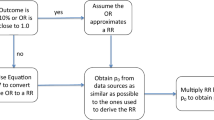Abstract
A nonhomogeneous Markov process is applied for analysing a cohort of women with breast cancer that were submitted to surgery. The follow-up was scheduled every month. Three states are considered: no relapse, relapse and death. As relapse times change over time, we have extended previous approaches for a time-homogeneous model to a nonhomogeneous multistate process. The transition intensity functions among states are the hazard rate functions of different lognormal distributions; we therefore build the likelihood function for this model, estimate the parameters and compare the empirical and nonhomogeneous models in terms of the survival probability functions. The parameter estimation is done following the maximum likelihood method. The effect of treatments is incorporated as covariates by means of the lognormal hazard rate functions, following the proportional hazard model. Thus, we have a multistate model with multidimensional covariates. Survival functions for the different cohorts submitted to treatments are obtained and goodness-of-fit tests are performed.
Similar content being viewed by others
References
Andersen, P.K., L.S. Hansen and N. Keiding (1991a). Non- and semiparametric estimation of transition probabilities from censored observations of a non-homogeneous Markov process.Scandinavian Journal of Statistics,18, 153–167.
Andersen, P.K., L.S. Hansen and Keiding, N. (1991b) Assessing the influence of reversible disease indicators on survival.Statistics in Medicine,10, 1061–1067.
Andersen, P.K., I. Borgan, R.D. Gill and N. Keiding (1993).Statistical Models Based on Counting Processes. Springer-Verlag.
Basawa, I.V. and B.L.S. Prakasa Rao (1980).Statistical Inference for Stochastic Processes. Academic Press, London.
Couper, D.M.S. and Pepe (1997). Modelling prevalence of a condition: chronic Graft-versus-Host disease after bone marrow transplantation.Statistics in Medicine,16, 1551–1571.
Cox, D.R. (1972). Regression models and life tables (with Discussion).Journal of the Royal Statistical Society, B,34, 187–220.
Cox, D.R. and H.D. Miller (1965).The Theory of Stochastic Processes. Chapman & Hall.
Day, R., J. Bryant and M. Leftkopoulou (1997). Adaptation of bivariate frailty models for prediction, with application to biological markers as prognostic indicators.Biometrika,84, 1, 45–56.
Duffy, S.W., H. Chen, L. Tabar and N.E. Day (1995). Estimation of mean sojourn time in breast cancer screening using a Markov chain model of both entry to and exit from the preclinical detectable phase.Statistics in Medicine,14, 1531–1543.
Frydmann, H. (1995). Semiparametric estimation in a three-state duration-dependent Markov model from interval-censored observations with applications to AIDS data.Biometrics,51, 502–511.
Gentleman, R.C., J.F. Lawless, J.C. Lindsey and P. Yan (1994). Multi-state Markov models for analysing incomplete disease history data with illustrations for HIV disease.Statistics in Medicine,13, 805–821.
Gutiérrez, R. and R. Pérez-Ocón (1994).Discussion on Stochastic Analysis of Q-matrix,by K.L. Chung. InSelected Topics on Stochastic Modelling (R. Gutiérrez and M. Valderrama eds.) World Scientific, 17–20.
Kay, R. (1986). A Markov model for analysing cancer markers and disease states in survival studies.Biometrics,42, 855–865.
Kalblfeisch, J.D. and J.F. Lawless (1985). The analysis of panel data under a Markov assumption.Journal of the American Statistical Society,80, 863–871.
Kaplan, E.L. and P. Meier (1958). Nonparametric estimation from incomplete observations.Journal of the American Statistical Society,53, 457–481.
Ly, Y. and F.W. Stitt (1994). Using Markov processes to describe the prognosis of HIV-1 infection.Medical Decision Making,14, 266–272.
Lawless, J.F. (1982).Statistical Models and Methods for Lifetime Data. Wiley.
Marshall, G. and R.H. Jones (1995). Multi-state models and diabetic retinopathy.Statistics in Medicine,14, 1975–1983.
Nelder, J.A. and R. Mcad (1987). A simplex method for function mimimization.Computer Journal,7, 308–313.
Pérez-Ocón, R., M.L. Gámiz-Pérez, and J.E. Ruiz-Castro (1996). Aplicación de técnicas gráficas en el estudio de tiempos de supervivencia.Estadística Española,38, 5–18.
Pérez-Ocón, R., J.E. Ruiz-Castro and M.L. Gámiz-Pérez (1998). A multivariate model to measure the effect of treatments in survival to breast cancer.Biometrical Journal,40, 703–715.
Pérez-Ocón, R., J.E. Ruiz-Castro and M.L. Gámiz-Púrez (1999). Semi-Markov models for lifetime data analysis. InSemi-Markov Models and Applications (J. Janssen and N. Limnios eds.) Kluwer Academic Publishers. Dordrecht, The Nederlands, 229–238.
Satten, G.A., and I.M. Longini (1996). Markov chains with measurement crror: estimating the ‘true’ course of a marker of the progression of human immunodeficiency virus discase.Applied Statistics,45, 275–309.
Sharples, L.D. (1993). Use of the Gibbs sampler to estimate transition rates between grades of coronary disease following cardiac transplantation.Statistics in Medicine,12, 1155–1169.
Author information
Authors and Affiliations
Corresponding author
Additional information
The first author gratefully acknowledges the financial support by DGES, Proyecto PB97-0827, Ministerio de Educación y Cultura, Spain.
Rights and permissions
About this article
Cite this article
Pérez-Ocón, R., Ruiz-Castro, J.E. & Gámiz-Pérez, M.L. Markov models with lognormal transition rates in the analysis of survival times. Test 9, 353–370 (2000). https://doi.org/10.1007/BF02595740
Received:
Accepted:
Issue Date:
DOI: https://doi.org/10.1007/BF02595740
Key Words
- Covariates
- lognormal distribution
- maximum-likelihood estimate
- nonhomogeneous Markov process
- survival data




